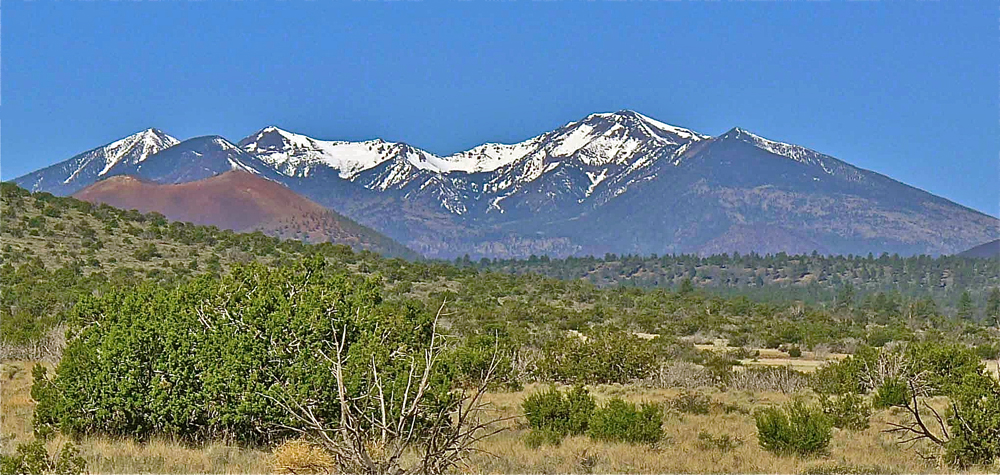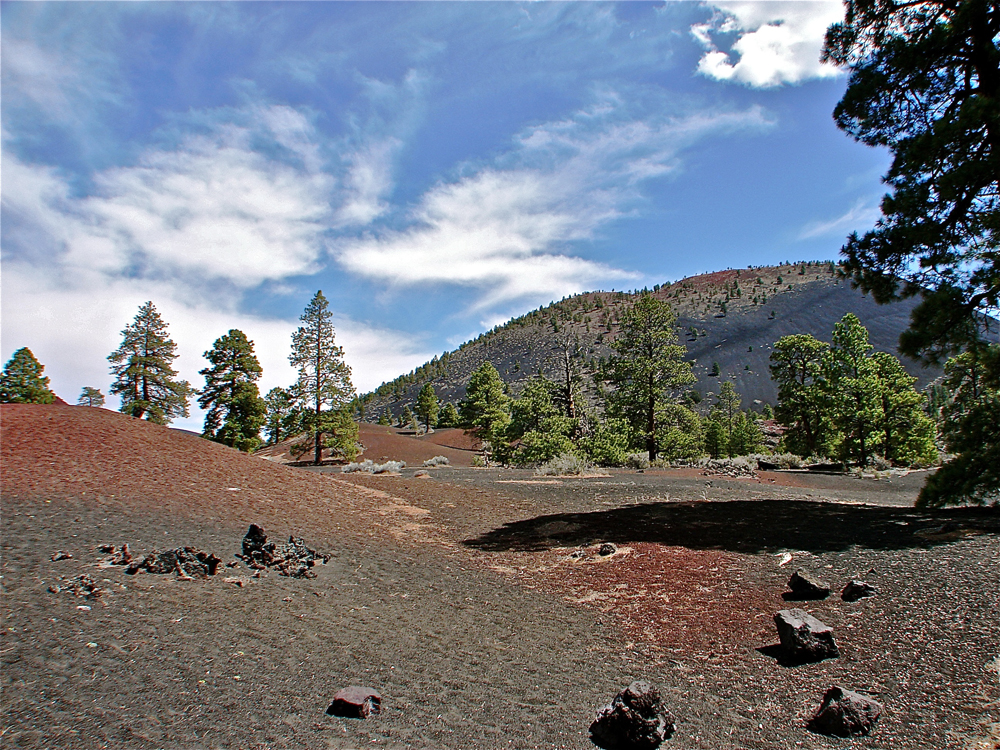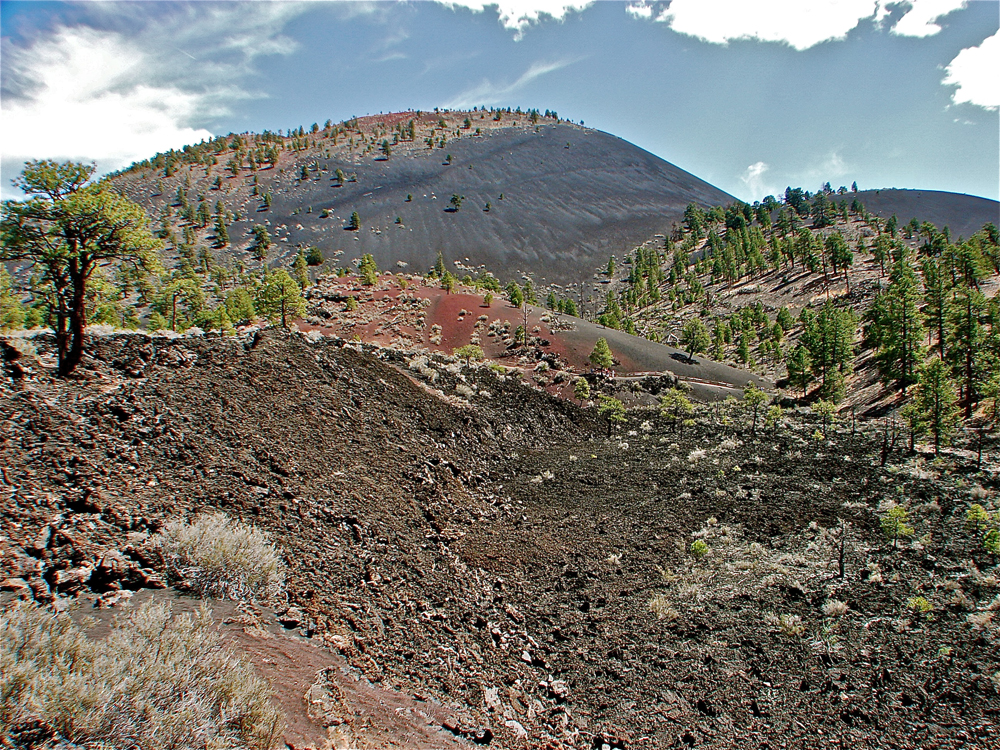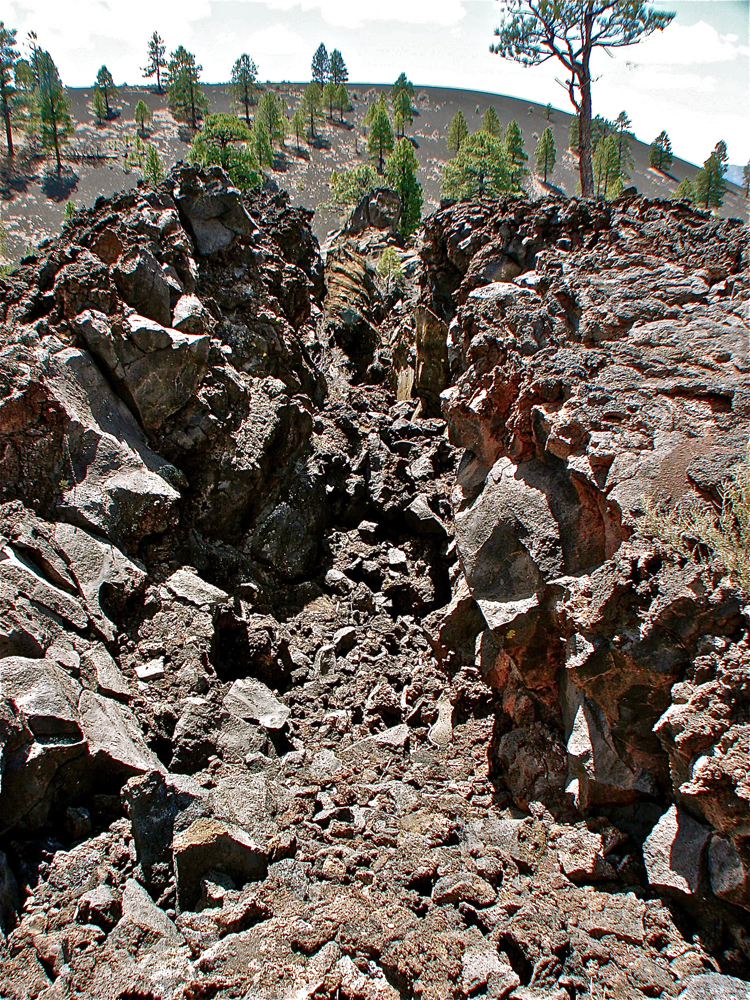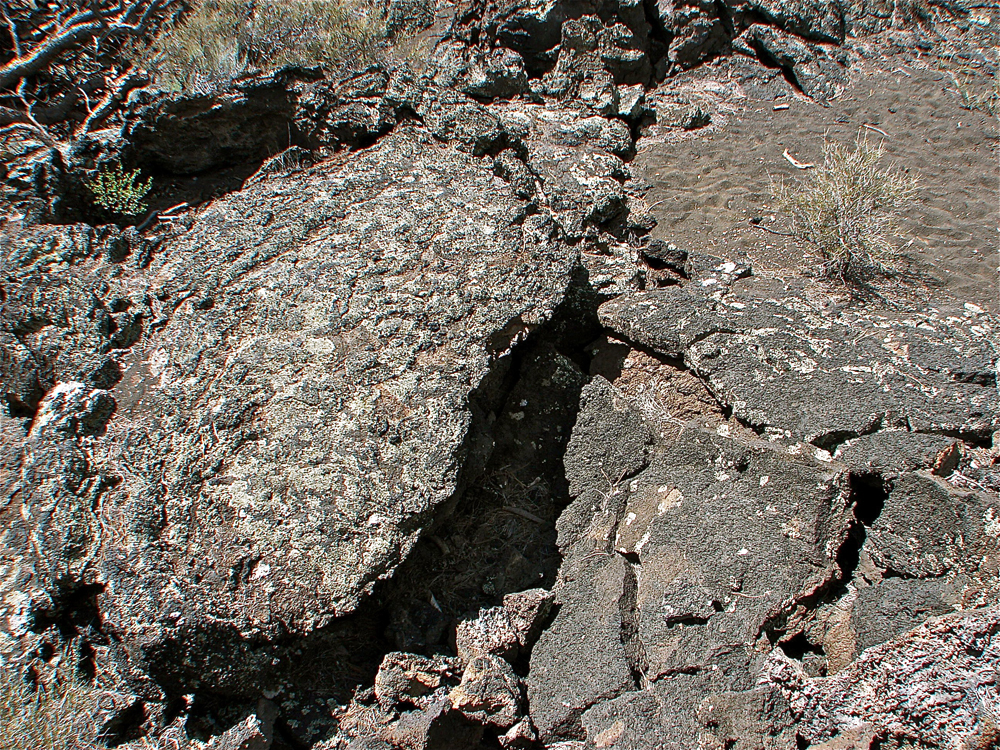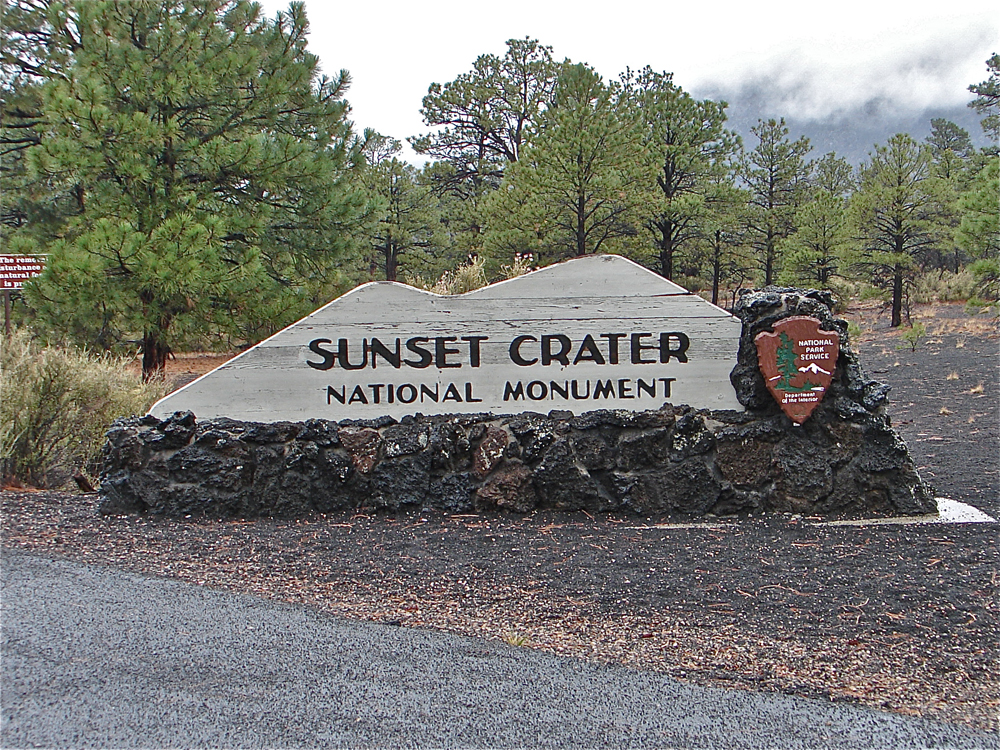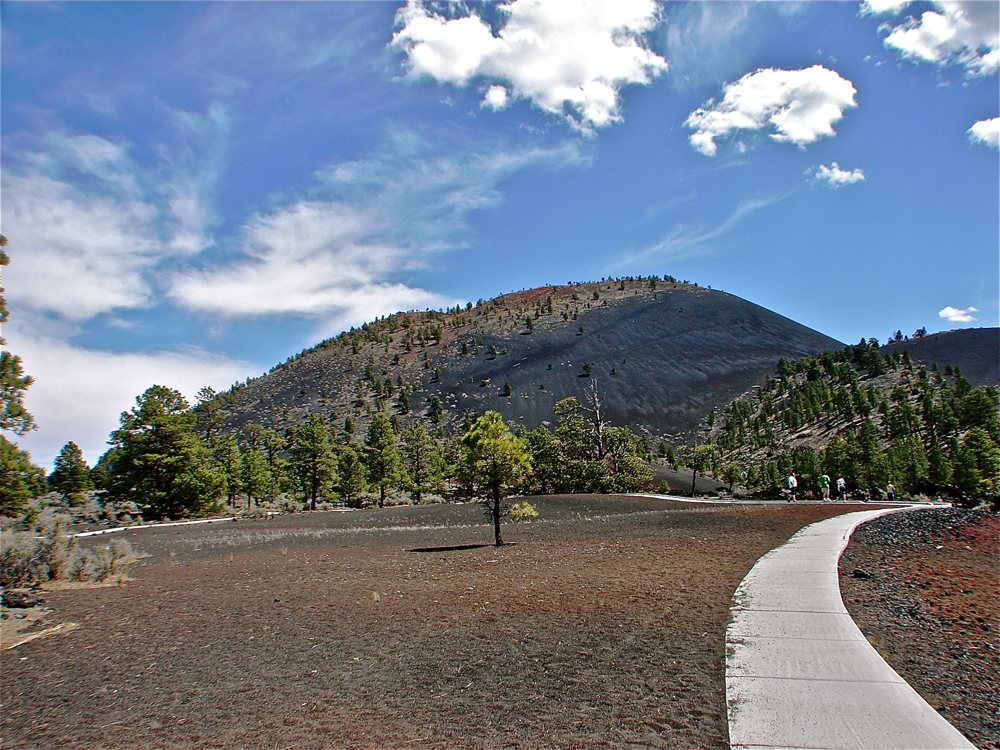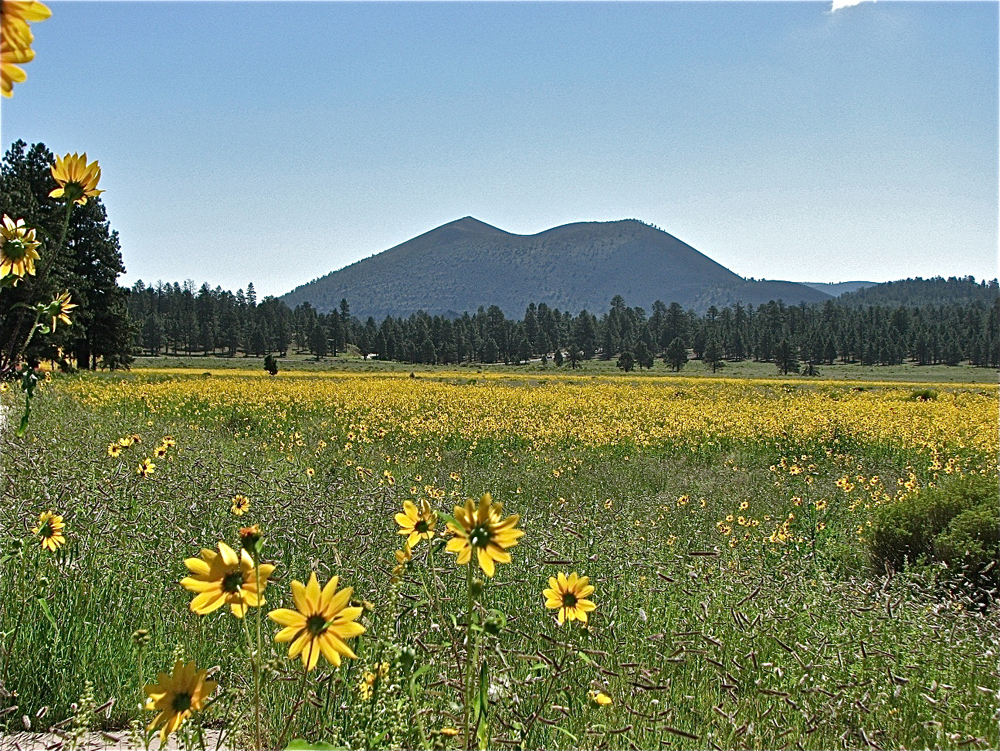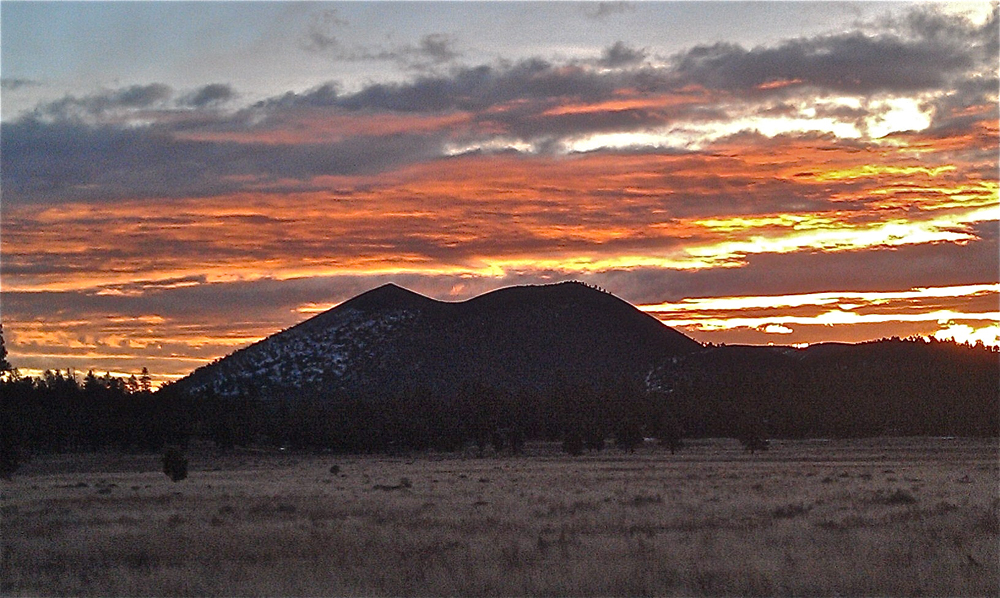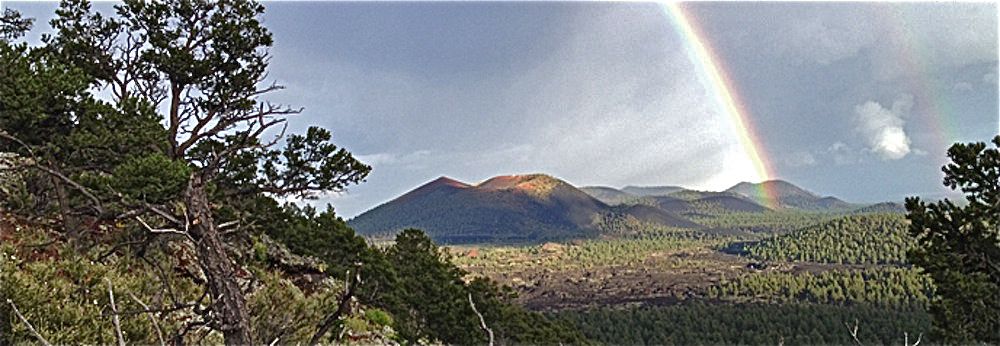Sunset Crater: Spectacular Photos of a Cinder Cone Volcano
Sunset Crater, located in north-central Arizona, is the youngest volcano found on the 130,000-square-mile (337,000 square kilometers) Colorado Plateau. In 1930, the Sunset Crater Volcano National Monument was established, and today, the region is a popular hiking destination. Check out these stunning images of an iconic geological feature in the Southwest.
Recent creation
Sunset Crater was created by a series of eruptions that occurred between 1040 and 1100 A.D. The eruptions created one of the youngest scoria cones in the contiguous United States. (Credit: NPS)
Beauty above all
The nearly symmetrical cone of Sunset Crater rises above the surrounding forested floor some 1,000 feet (300 meters). The main crater at the summit of the cone measures nearly 400 feet (120 m) across, while the base of the cinder cone measures about 1 mile (1.6 km). The volcano gets its name from the yellow, red and pink colors of silica, iron oxide and gypsum found around the volcano's summit. (Credit: NPS)
An ancient volcanic field
Sunset Crater lies on the eastern boundary of the 1,931-square-mile (5,000 square kilometers) San Francisco Volcanic Field that extends westward to Williams, Arizona, and eastward to the Little Colorado River. The most ancient of the 600 volcanic vents found on the San Francisco Volcanic Field first began eruption along the western edge about 6 million years ago. Eruptions here continued, migrating eastward and culminating with the eruption of Sunset Crater. (Credit: NPS)
Get the world’s most fascinating discoveries delivered straight to your inbox.
A small eruption
The volcanic ash and lapilli that spewed from Sunset Crater during its active period of eruption fell on a surrounding area of 800 square miles (2,100 square kilometers). The low-intensity strombolian style of eruption was large, yet columns of smoke and debris were thought to have only risen some 200 to 500 feet (61 to 152 m) in the air. (Credit: Linda & Dr. Dick Buscher)
A devastating effect
The eruption of Sunset Crater resulted in an unusually large amount of volcanic debris for a strombolian-style eruption. The eruption of Sunset Crater had a devastating effect on the flora, fauna and indigenous people living in the surrounding area. (Credit: Linda & Dr. Dick Buscher)
Lava flows
Two large lava flows were created by the eruption of Sunset Crater. The Bonito lava flow broke through the west and northwest base of the cinder cone and eventually covered an area measuring 1.8 square miles (4.7 square kilometers). The Kana-A lava flow appeared from the east side of the cone and migrated nearly 6 miles (10 km) down into a valley. (Credit: Linda & Dr. Dick Buscher)
The Bonita lava flow
The Bonita lava flow is the younger of the two lava flows and still looks dark black in color — even after 900 years. It is known as a basaltic A'a flow. This results in a landscape that is extremely rough and difficult to walk on. On average, the flow is nearly 5 feet (1.5 m) thick along the edge and is as much as 100 feet (30 m) thick at the center. Trees, shrubs and cinder patches now line the edge of the Bonita flow. (Credit: Linda & Dr. Dick Buscher)
Slower spread
The lava found in the Bonito flow is classified as mafic, which means it is low in silica. Mafic lava has a low viscosity, which results in a slower movement of lava. Green lichen has begun to grow on the Bonita flow lava, beginning the million-year-long weathering process that will someday result in a field of rich volcanic soil. (Credit: Linda & Dr. Dick Buscher)
A great place to visit
Sunset Crater today is the centerpiece of the 4.7-square-mile (12 square kilometers) Sunset Crater Volcano National Monument, located only 15 miles (24 km) northeast of Flagstaff, Arizona. It was established on May 26, 1930, through the action of President Herbert Hoover. (Credit: Linda & Dr. Dick Buscher)
A volcanic experience
Since 1970, visitors have been prohibited from walking on or to the top of the cinder cone. Today a self-guided, one-mile-long (1.6 kilometers) walking trail allows visitors to experience the volcano's massive size and the eruptive power that once existed here. (Credit: Linda & Dr. Dick Buscher)
A recovered paradise
The ecological devastation from the Sunset Crater erupted has long since disappeared. Lush nearby mountain meadows are intermingled today within a large forest of ponderosa pine trees (Pinus ponderosa). The area has become a photographer's paradise, as the vibrant colors of wildflowers now grow in stark contrast to the dark colors of the volcanic landscape. (Credit: NPS)
Beautiful views
The natural beauty found around Sunset Crater shows it's unique charm daily. Here, the ancient cinder cone is silhouetted against the orange and golden colors of a cool morning mountain sunrise. (Credit: NPS)
An active future
The San Francisco Volcanic Field has not experienced volcanic activity for nearly 1,000 years, but scientists think volcanic activity here is still possible — most likely further to the east of Sunset Crater. But until that future time, Sunset Crater will remain a beautiful, natural monument to the last time the earth rumbled, opened and flowed onto the Colorado Plateau. (Credit: NPS)
Follow us @livescience, Facebook & Google+.




